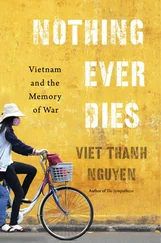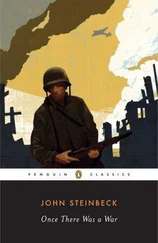The turning-point of the war has been seen by most commentators as the Tet Offensive of January 31, 1968, the all-out NVA and NLF surprise attack on South Vietnamese and American government installations in Saigon and other cities that was, according to historian David Schmitz, “arguably, the most important event of the Vietnam War,” 47for it changed the American public’s perception of the possibility for victory and forced the US government to reevaluate. At great human cost to the oppositional forces—more than 80,000 of their troops were killed or captured—units from both north and south drove into the seven largest cities of South Vietnam and thirty provincial capitals from the Delta to the Demilitarized Zone (DMZ) but were eventually repulsed after savage fighting. The Tet offensive was designed by the North Vietnamese planners to instigate a general insurrection among the South Vietnamese population, in which mission it failed. On the other side, the outcome was regarded by the US press as an American military victory but a psychological and political defeat. 48In the end, Halberstam insists, “it was not American arms and American bravery or even American determination that failed in Vietnam; it was American political estimates, both of this country and of the enemy.” 49
The year of the Tet Offensive revealed that the war was tearing American society apart. In March, Lieutenant William Calley led Charlie Company of the Americal Division’s 11th Brigade into the group of villages known as My Lai and perpetrated the massacre of up to four-hundred civilians, an atrocity that shocked the American public. The general feeling was: how could our boys behave like Nazis? President Johnson, buffeted by a long series of setbacks, announced that he would not seek re-election. Violence escalated at home as protests against the war became ever more numerous and aggressive. In August, a group of antiwar demonstrators at the Democratic convention in Chicago was savagely set upon by Mayor Daly’s police as the nation watched on television. Civil rights leader Martin Luther King Jr., who spoke out against the war and encouraged a united effort by civil rights and antiwar organizations, was assassinated in April. And Robert Kennedy, who was expected to step in as the Democratic candidate to bring a halt to the war, was assassinated in June.
In November, Richard Nixon, with only 43% of the vote, was elected president, promising an “honorable” end to the war (as Eisenhower’s Vice-President back in 1954, Nixon had wanted to send American troops to bail out the French at Dien Bien Phu, an idea that was squelched by Eisenhower). Instead of withdrawing from the war, Nixon instead extended it for several more years, undermining the Paris peace talks by sending a secret emissary to reassure the South Vietnamese government and by ordering the covert bombing of Cambodia to destroy enemy supply routes and base camps, which set off nationwide student protests. During the Christmas season of 1972, he ordered the bombing of North Vietnam in the most intense campaign of its kind ever, again setting off protests all over the country. Nixon’s rhetoric of “peace with honor” could not conceal the continuing American goal of a non-Communist Vietnam, essential to his chief advisor Henry Kissinger’s realpolitik global strategy. 50It was, however, secret negotiations between Kissinger, who would become Nixon’s Secretary of State, and North Vietnam’s Le Duc, which began in 1970, that would eventually lead to the withdrawal of US troops in 1973.
With the implementation of Nixon’s policy of “Vietnamization,” in which military responsibility was handed back to South Vietnam, defeat was virtually inevitable, and in fact came two years later, with the fall of Saigon on April 30, 1975, followed by the reunification of the country by the North Vietnamese military and civilian authorities. By that time, the war had claimed over 57,000 American, and an estimated one to two million Vietnamese and other Indochinese, lives. The first article of the Paris Agreement, which formalized the withdrawal, stated: “The United States and all other countries respect the independence, sovereignty, unity, and territorial integrity of Vietnam as recognized by the 1954 Geneva Agreements on Vietnam.” 51That is to say, nearly twenty years later and all the attendant deaths, suffering, and costs, the United States was back to square one.
Ultimately, American policy in Southeast Asia was based on a misunderstanding of historical, political, and military realities. Despite the fears of American leaders, the press, and the public, there had never been a global Communist expansion controlled by Moscow. As Hobsbawm has argued, “there is no real evidence that [the U.S.S.R.] planned to push forward the frontiers of communism by revolution until the mid 1970s,” that is, by the time that the Vietnam War had ended. 52
The war had far-reaching political, as well as economic and social, consequences. It divided the Democratic Party—with two presidents from that party leading the nation into Vietnam—to such an extent that it never recovered its reputation since the 1930s as the progressive party of working people. The economic boom after World War II ended in 1963 with the global oil crisis, but also owing to the immense cost of the Vietnam War, which resulted in part in the downward spiral of working people’s incomes that continues until today. The social and historical significance of the war continued to be felt long afterward. 53The American public’s confidence in its government had been dealt a mortal blow, which gave an impulse to the “New Right” in subsequent years and the candidacies of men like Ronald Reagan, who actually campaigned for government office on anti-government platforms.
In contrast to historical works, the imaginative literature of the war has focused on its soldiers, most of whom were ignorant of, or indifferent to, the momentous events that have been described in the previous section. More than two million Americans eventually went to Vietnam, only a small part of whom actually saw combat. Robert D. Shulzinger claims that the combatants made up no more than 20% of the US forces at any time, with 80% comprising supply and support personnel, but most of the fiction and memoirs written by ex-soldiers are, not surprisingly, by combat veterans. The number of women estimated to have served in Vietnam constitutes a small minority, between 8,000 and 15,000. 54The fighting men had an average age of nineteen, as opposed to that of twenty-six for the combatants of World War II, and over 60% of all the men killed were between seventeen and twenty-one. 55These youths came primarily (80%) from poor or working-class neighborhoods, with a proportionally greater number coming from rural or small-town environments. 56
In his important sociological study of these soldiers, Working-Class War (1993)—from which these statistics are quoted—Christian Appy has demonstrated that the class-division between those who would fight the war and those who would protest it was in fact ensured by government policy. The reserve manpower for wars was historically designed to be made up of men in the Army Reserves and the National Guard, but neither of these groups, which are made up of older men from more secure socio-economic environments, was called up for active service in Vietnam: out of a million reservists and national-guardsmen, only 37,000 were mobilized and only 15,000 sent to Vietnam. In fact, many men tried to enlist in the National Guard as a way of avoiding the draft and being sent to war, including the (later) Republican President, George W. Bush, who, with his father’s influence, was admitted into the Air National Guard in Texas. Restrictive admission policies to these units were a way of ensuring that the underprivileged strata of society would not be able to avoid being drafted. Besides, as Appy argues, going into the army after high-school, or even before graduating, was perceived by working-class youths as much an expected and unavoidable part of their lives as going to college was for those of their middle-class counterparts. 57
Читать дальше












